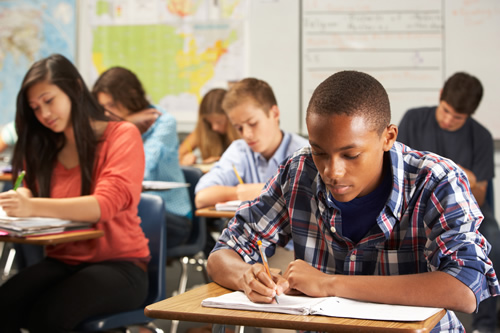In today’s interconnected world, student communities play a critical duty in shaping scholastic and individual experiences.

These neighborhoods are not just collections of individuals yet are dynamic ecosystems that promote development, finding out, and partnership amongst students. They vary extensively in type and function, from campus-based groups to worldwide on the internet forums, each offering one-of-a-kind opportunities for engagement and advancement.
Whether you are tipping onto a college campus for the first time or taking part in virtual learning atmospheres, recognizing the structure and advantages of student neighborhoods can greatly improve your educational journey. This article delves into the significance of trainee neighborhoods, exploring exactly how they operate, the benefits they supply, and the methods which they can be leveraged for individual and academic success.
Understanding Student Communities
Pupil communities are foundational to the scholastic experience, functioning as both social and instructional support group. At their core, these neighborhoods are groups formed normally by pupils who share typical interests, goals, or fields of study. They can be informal, such as study hall, or formal, like trainee unions and clubs.
These communities are characterized by a shared identification and the collective quest of understanding, skills, and experiences. They serve as platforms for students to link, team up, and add to each various other’s growth, extending past academic boundaries to affect individual development and community interaction.

Basically, trainee neighborhoods are microcosms of larger societal structures, where leadership abilities are sharpened, ideas are traded, and lifelong relationships are formed. The interactions within these neighborhoods show a varied mix of cultural, intellectual, and social dynamics.
- Networking Opportunities: Student communities give a network of peers and advisors who can use assistance and support.
- Skill Development: Taking part in community tasks aids pupils create necessary skills such as interaction, leadership, and team effort.
- Source Accessibility: These neighborhoods usually give accessibility to scholastic sources, consisting of study materials and expert advice.
- Social Interaction: They provide a system for social interaction, alleviating the change into brand-new scholastic settings and aiding to fight seclusion.
Through these different features, pupil neighborhoods become integral to the all natural advancement of trainees, laying a foundation for future professional and individual success.
The Advantages of Taking Part In Student Neighborhoods
The benefits of taking part in pupil areas are tutoring network diverse, impacting both academic and personal rounds.

On an academic degree, these areas urge collective discovering, allowing pupils to benefit from diverse viewpoints and know-how. Sharing knowledge and resources within a community can result in more effective knowing outcomes and boosted academic efficiency.
Moreover, student neighborhoods provide a system for individual growth and self-discovery. By engaging with peers from different histories and disciplines, pupils acquire a wider worldview, improving their social proficiency and empathy. This direct exposure to varied viewpoints is vital in developing vital reasoning and analytic skills.
Additionally, active participation in area tasks can improve pupils’ self-confidence and self-confidence. Taking on leadership roles or joining discussions and occasions promotes a feeling of success and belonging, which is crucial for total health and motivation.
Types of Pupil Neighborhoods
Student areas can be found in different forms, each satisfying various interests and objectives. These can be broadly categorized into academic, cultural, recreational, and specialist areas, among others. Each kind provides distinct platforms and chances for trainee engagement.
- Academic Communities: These are typically focused around certain fields of study or academic passions. Instances include study groups, honors cultures, and department clubs.
- Social Communities: These groups focus on advertising cultural awareness and variety, often arranging occasions and activities to commemorate numerous traditions.
- Leisure Neighborhoods: These consist of sports groups, recreational clubs, and hobby-based groups that provide a break from academic rigors and advertise physical and psychological health and wellness.
- Expert Neighborhoods: These are focused on career advancement, using networking possibilities, workshops, and mentorship programs to prepare trainees for the specialist globe.
By determining and engaging with the right areas, students can customize their college experiences to align with their passions and career aspirations, paving the way for a satisfying scholastic trip.
Building a Flourishing Trainee Community
Creating and keeping a growing student neighborhood needs initiative and cooperation from both pupils and educational institutions. It begins with fostering a comprehensive setting where all pupils feel welcomed and valued no matter their histories.
Institutions can sustain this by supplying resources and facilities that urge interaction and participation. This includes creating physical spaces like student unions and online platforms that help with communication and cooperation. In addition, organizing occasions, workshops, and seminars can better boost interaction, providing trainees with opportunities to link and gain from each various other.
Leadership and Pupil Involvement
Reliable leadership is important in supporting an effective pupil neighborhood. Leadership functions within these communities supply trainees an opportunity to develop and show their organizational and interpersonal skills. Trainees that assume these functions contribute dramatically to setting the tone and direction of their neighborhoods, affecting their peers favorably.
Motivating management and energetic involvement among students not only reinforces the area but additionally equips individuals, preparing them for future obstacles. By promoting a society of collaboration and support, student neighborhoods can thrive, leaving a lasting effect on their participants and the scholastic environment overall.



